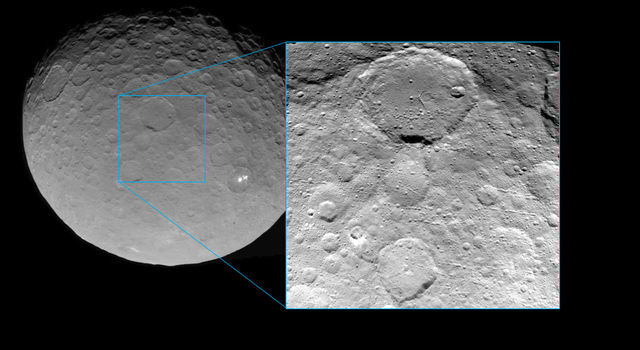News | May 28, 2015
Dawn Spirals Closer to Ceres, Returns a New View

› Full image and caption
A new view of Ceres, taken by NASA's Dawn spacecraft on May 23, shows finer detail is becoming visible on the dwarf planet. The spacecraft snapped the image at a distance of 3,200 miles (5,100 kilometers) with a resolution of 1,600 feet (480 meters) per pixel. The image is part of a sequence taken for navigational purposes.
Image is available at:
http://www.jpl.nasa.gov/spaceimages/details.php?id=PIA19065
After transmitting these images to Earth on May 23, Dawn resumed ion-thrusting toward its second mapping orbit. On June 3, Dawn will enter this orbit and spend the rest of the month observing Ceres from 2,700 miles (4,400 kilometers) above the surface. Each orbit during this time will be about three days, allowing the spacecraft to conduct an intensive study of Ceres.
Dawn is the first mission to visit a dwarf planet, and the first to orbit two distinct solar system targets. It studied the protoplanet Vesta for 14 months in 2011 and 2012, and arrived at Ceres on March 6, 2015.
Dawn's mission is managed by JPL for NASA's Science Mission Directorate in Washington. Dawn is a project of the directorate's Discovery Program, managed by NASA's Marshall Space Flight Center in Huntsville, Alabama. UCLA is responsible for overall Dawn mission science. Orbital ATK Inc., in Dulles, Virginia, designed and built the spacecraft. The German Aerospace Center, Max Planck Institute for Solar System Research, Italian Space Agency and Italian National Astrophysical Institute are international partners on the mission team. For a complete list of mission participants, visit:
http://dawn.jpl.nasa.gov/mission
More information about Dawn is available at the following sites:



